The following is the full text of Mayor Eric Johnson’s 2022 State of the City Address. Please note: Mayor Johnson occasionally deviated from the text as prepared.
Madam Secretary, City Manager Broadnax, City Attorney Caso, City Auditor Swann, Judge Robinson, members of the Dallas City Council, esteemed elected officials, board and commission members, city staff, honored guests, and fellow residents of the great City of Dallas: thank you for joining me this morning.
My duty here, under the Dallas City Charter, is to once again report to you on the state of our city, its financial condition, and our plans for the future.
And today, I can proudly say that the state of our city is stronger than ever, and that Dallas is back.
We’re back because we continue to focus on our future while building on our past and addressing our challenges.
And that’s why I chose to again deliver this annual address at Fair Park, a uniquely Dallas venue that represents both our city’s past and our future.
Fair Park both serves our residents and puts Dallas on the world stage. Every year, Fair Park hosts special events, concerts, musicals, and festivals. Every summer, more than 10,000 Dallas residents come here to pick up school supplies during the Mayor’s Back to School Fair. And every fall, the great State Fair of Texas, which set a new attendance record this year, draws millions of people to Fair Park from all over our city, from across this region, and from around the world.
Fair Park has also been an invaluable asset for us during difficult times. Remember, just a year and a half ago, this park was a vaccination site for hundreds of thousands of people.
That collaborative effort helped us bring an end to those dark and desperate days when COVID-19 kept us apart, forced us into virtual meeting marathons, and took our kids out of their classrooms.
Fair Park, in other words, is a place of hope, a place of opportunity, a place for fun, and a place that serves our families.
However, it is abundantly clear that we haven’t been putting our best foot forward here at Fair Park. Unfortunately, like too many communities in our city, Fair Park and its surrounding neighborhoods have largely been underserved and overlooked — and for far too long.
Today, I say to you: no more. Not here, and not anywhere in our city.
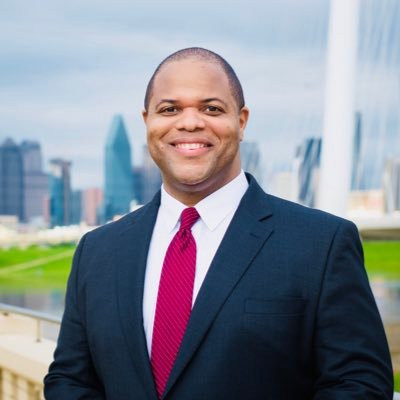
We’re committed to building a Dallas where no community will be underserved or overlooked. We’re working to bring an end to the era of inequities. And we’re beginning a new era of opportunity for all of our residents.
One week ago, Dallas voters took advantage of an historic opportunity. Through their overwhelming approval of Proposition A, we are primed to make the single-largest investment in Fair Park’s 136-year history. And we’ll be able to revitalize Fair Park and make it — for the first time — a genuine asset to its surrounding community and its incredible people.
And that’s not all.
Our voters also supported funding that will help us expand and modernize the Kay Bailey Hutchison Convention Center. That means we can bring new development and new life to downtown Dallas. It means creating new places that can be enjoyed by both Dallas residents and visitors alike.
It also means we can do all of this for our city without raising taxes on our residents.
In fact, we’re making these significant investments as we work to reduce our residents’ property tax burden. I’m proud to say that just two months ago, this City Council voted for our largest tax-rate cut in at least four decades.
And we did that while still increasing our commitment to our top priorities. We’re boosting spending to grow our police department, to reduce violent crime, and to support our firefighters and paramedics.
We’re investing in new strategies to reduce the scourge of homelessness. We’re fully funding the Office of the Inspector General to end corruption at City Hall. We’re demanding a more accountable and responsive city government for our residents. And we’re adding new parks, trails, and green spaces at an unprecedented pace.
Our efforts are paying off. In the last four years, Dallas has welcomed $14 billion in new development, and we have billions more in the pipeline.
My friends, we’ve come a long way from the distressing days of lockdowns, civil unrest, natural disasters, and other assorted calamities.
Even in the face of today’s national and international challenges, the City of Dallas has been undeterred.
We’ve stayed focused. We’ve solved problems. We’ve kept promises. And we’ve empowered our people.
As a result, Dallas emerged from the pandemic as a national leader — as America’s “Comeback City.” And we have an undeniable and irrepressible spirit — or as some call it, “Big Dallas Energy.”
Don’t get me wrong: we understand that there is still plenty of work to do. And we know that as we stand tall, the pendulum will try to swing back and knock us on our heels.
But this is a city that embraces challenges — and we thrive because of them. This great unfinished metropolis continues to brim with potential because we acknowledge our imperfections and actively work to correct them. We’re ignoring the doubting Thomases, and we’re putting our faith in each other. Our hearts are full, our dreams are big, and this decade is ours for the taking.
It’s difficult for me not to be romantic about the possibilities of our city. As many of you know, I’m one of the very few mayors in our city’s history who was born and raised in Dallas.
I now stand before you as the mayor of the ninth-largest city in the nation after spending a childhood cramped in a two-bedroom apartment with three siblings and two parents in West Dallas and Oak Cliff.
It would be easy to tell you that I came from nothing — and that I had nothing back then. However, that wouldn’t be true. Because for everything I lacked and did without as a kid, I had my family. I had a community that cared about me. And I had access to a quality education.
Not everyone I grew up with could say they had the same.
As we continue to build on our city’s momentum, that is where our focus must be: On making life better for our families. On strengthening our neighborhoods. And on providing greater opportunities for our residents to achieve their goals and aspirations.
That means we must never forget that the foundation of everything we do is public safety.
Since I became mayor, city leaders have committed to my goal of making Dallas the safest major city in the United States.
No matter which way the political winds blew, I’ve always put public safety first. I fought back against the “defund the police” movement, and I fought for the equipment, the compensation, and the community support that our police department needed to reduce violent crime.
My views on public safety have been shaped by evidence and data, but they’re also firmly rooted in my upbringing.
When I was in high school in the early 1990s, our nation and our city experienced the four most violent years in our history. In 1991, when I was a sophomore, Dallas hit a record high of 500 murders that year. And the victims were predominantly young men who looked like me, and were from neighborhoods just like mine.
The fact is, though, these were strong — and still are — neighborhoods. They weren’t the Wild West. Our neighbors were overwhelmingly law-abiding people who looked out for each other and who worked hard to put food on the table.
But life was made all the more difficult because of a small group of people who preyed on their neighbors. They’re what we call “the criminal element.” They’re not the victims of a flawed system — they’re one of the system’s biggest flaws. They took lives, they terrified and devastated families, and they were a hindrance that prevented many people from reaching their full potential.
That’s the world I grew up in: a world where trouble was all around us, where safety — that most basic of needs — was no guarantee. It was, sadly, a world where our dreams were too frequently interrupted — literally and figuratively — by the sound of gunfire.
When it comes to public safety, we must be guided by the core belief that all of our communities deserve to be safe — and want to be safe. That they want the criminal element weeded out of their neighborhoods. And that they want to be treated fairly and to get the same level of service as other parts of town.
That’s why we need well-trained officers. That’s why we need community policing, accountable policing, and data-driven policing. And that starts with strong leadership.
When our city went looking for a new police chief back in late 2020, I knew that we weren’t going to find someone who had all the answers.
But I also knew we needed someone who would relentlessly seek those answers and even team up with criminologists to implement the best violent crime reduction strategies available.
That’s why I’m so grateful that we found the best police chief in the nation, my partner in reducing violent crime, Eddie Garcia.
Behind Chief Garcia’s proactive leadership, the daily heroism of the men and women of the Dallas Police Department, and our community-based violent crime reduction programs, I’m proud to say that once again, Dallas is bucking national trends when it comes to violent crime.
As violent crime in other cities has continued to go up, in Dallas, violent crime is still going down.
Our violent crime plan has yielded a 12-percent reduction in the places where it has been implemented. And I’m proud to report that Dallas is much safer today than it was two years ago, and we’re positioned to make it even safer in the years ahead.
Not every city can say that. We should be proud of what we’ve accomplished. But the chief knows, like I do, that we don’t get to celebrate as long as there are still families in Dallas whose lives are forever changed by violence.
That’s why this year, the Dallas City Council agreed to fund the hiring of another 250 police officers in the year ahead — and to pay them fairly.
This will allow us to continue implementing the violent crime reduction plan where it is most needed.
Our commitment to public safety is also why we created the Mayor’s Summer of Safety Campaign, which helped us keep our kids safe while they were out of school by guiding them to our city’s free and low-cost programs and activities.
It’s why we’re working to improve our blight remediation strategies. It’s why we’re improving lighting in high-crime areas. It’s why we’re partnering with the Texas Alcoholic Beverage Commission to hold bars and nightclubs accountable for keeping their patrons safe. And it’s why we’re using violence interruption strategies to deter criminal behavior.
This is the “kitchen-sink approach” to fighting violent crime. And that’s what it takes: everyone working together, relentlessly and strategically, toward the same goal.
The stakes are high. Out there in Dallas right now are kids like me — kids like the ones I grew up with. And they deserve to grow up in safe communities and to dream big dreams.
Those dreams can become reality if we continue to enhance the efforts we’ve already made to build for our future.
As I mentioned before, we went to our voters with big ideas for Fair Park and the convention center. But now, the real work begins.
We should not act as if Dallas voters handed us a blank check. We must ensure that these transformational projects of generational consequence are completed in a responsible and accountable way. And we must ensure that our residents — not just visitors to our city — benefit from these developments.
That’s the approach we must take to every issue at City Hall as we rectify past mistakes and address problems created by long-gone generations through neglect, indifference, and sometimes just plain wrong-headed ideas.
We must be thoughtful. We must be accountable. And we must be, once again, relentless.
In the year ahead, it is imperative that we use this perspective to help us build on our work in 10 major policy areas.
First, yes, it’s true we cut our tax rate to the lowest level since 2007 and increased our homestead exemption for seniors and disabled residents. That’s significant progress. But now, we need to reduce that rate even further to help our residents and businesses thrive.
Second, we created an Economic Development Corporation to make us more competitive regionally, nationally, and internationally. Now, Chairman Atkins, we must see to it that we use every tool available to get our fair share of corporate relocations in this fast-growing region.
Third, we’ve invested in restoration projects and major new developments that will bring jobs, entertainment, and new life to our city. That includes the Longhorn Ballroom, the new Goldman Sachs offices, University Hills, and the East Quarter of downtown. Now, we must adopt new economic incentive policies that will help us further capitalize on these deals.
Fourth, we’ve created a master development plan for Hensley Field. Now, Chairwoman Blackmon and Chairman Thomas, we must work with our federal partners to ensure that environmental remediation can begin so work can start as soon as possible.
Fifth, we’ve fully funded our Office of Inspector General to eliminate corruption at City Hall. Now, Chairwoman Mendelsohn, we must develop and pass more reforms that can clarify and simplify our rules to truly build a culture of ethics and compliance.
Sixth, we’ve made workforce development a top priority for the first time in our city government’s history. And through the new Workforce Dallas initiative led by my workforce development czar Lynn McBee, and through the Mayor’s Franchise Initiative led by my impact ambassador Carlos White, we must take the opportunity to build a business ecosystem that can make a difference for working families in our city.
Seventh, we’ve begun to see our city government getting back to basics. The city manager has made some important progress through a 100-Day Plan meant to deal with the most persistent operational issues at City Hall. Now, Mr. City Manager, we need you to take our city government to the next level by ensuring that the services we offer, such as those in our city’s permitting office, are first-class and customer-centric. And I know our City Council is ready to give you whatever tools you need to make that happen. We need urgency, and we need results.
Eighth, we’ve created major strategic plans — on the environment, on housing, and even on sidewalks. Now, we must continue their implementation. And we must work to ensure that these plans aren’t just filed away, collecting dust in the “fiction” section of our public library.
Ninth, we created the International District in North Dallas. Now, we will soon open foreign trade offices that will transform that area into a gateway to the world and cement our city’s place on the international stage.
And finally, we’ve made strides in our response to homelessness. Like almost every major city in this nation, the ranks of our homeless population have swelled in recent years.
While this is a major public health issue, and Dallas County is our contracted public health authority, the City of Dallas has nonetheless been the most proactive governmental entity dealing directly with this issue in our region.
We’re clearing and cleaning encampments — hundreds of them. We’ve partnered with numerous nonprofits and service providers to get people the help and the housing they need. We’re buying up old hotels for supportive housing.
And we’ve provided inclement weather shelters so we can keep vulnerable people safe when the weather becomes extreme.
Our regional Real-Time Rapid Rehousing initiative has taken nearly 1,300 people off our streets in the last year alone. And through a new master leasing program, which we funded through a budget amendment that I proposed this year, we can expedite that effort.
But we know that addressing homelessness will be one of our toughest challenges in the years ahead. People who are experiencing chronic homelessness continue to seek shelter on our streets, our sidewalks, and our underpasses that are filled with tents, sleeping bags, and waste.
Dallas is a city of love and empathy. But we’re also a city that cares about health and safety and respects our residents who simply want to walk to work or into one of our public libraries without being accosted and without fear.
That’s why, in the weeks ahead, I will name a task force of stakeholders and experts to help us develop recommendations for better coordinating our homelessness response.
Their North Star will be simple, and it’s this: we need solutions, but this is not a City of Dallas problem alone to solve. The City of Dallas has generously extended a helping hand to people in need, but that has also meant we’re sometimes left holding the bag for our entire region.
We will look to our county governments to play bigger roles. We will look to regional entities to take up this issue. We will ask our neighboring cities who haven’t joined our efforts to do so now. And we will ask our state and federal partners to help us care for our most vulnerable people.
If we’re going to move the needle on homelessness, it’s time to employ the same all-in, “kitchen sink” approach that we’ve used successfully to improve public safety and economic development in our city.
These are the immediate steps we must take this year. But we also need to look further ahead toward the city we want to be 10 years from now.
Next year, we’ll get serious about what we want to see in a billion-dollar 2024 bond package. As we shape that proposal for our voters to consider, I will push our city leaders to focus primarily on the “Three P’s” — public safety, potholes, and parks.
With the first P, public safety, our needs are evident. This year, I proposed a budget amendment to provide $1.75 million worth of immediate repairs at our fire stations. That was just a start, Chief Artis. Our actual needs at our existing stations are about 10 times as much, and we’ll also need to devote millions more to replace aging fire stations.
These fire stations are homes away from home for our first-responders. And between their life-saving fire-and-ambulance runs, they deserve to go back to places that are clean, safe, and comfortable.
It’s also time for us to get moving on a new police academy in partnership with the University of North Texas at Dallas. Our current police academy is, frankly, unworthy of the men and women of the Dallas Police Department.
A cut-rate approach to police training will not cut it in the 21st century. We must begin to create a place of learning and wellness that helps us produce the most well-trained and well-qualified officers in the nation.
When it comes to potholes, our residents deserve better streets and sidewalks.
In 2017, Dallas voters committed more than half a billion dollars to streets in the bond package. The next bond package needs to make another commitment to resurfacing our roads, making them friendlier to pedestrians, and readying them for the demands of the future.
We should also look to provide funding that can help us deck over a below-grade Interstate 345 and reconnect Deep Ellum to downtown. If we do not find a way to take full advantage of the 17 acres of land freed up by a rebuilt highway, we will have missed an historic opportunity for our city center.
Finally, the third P — parks — are close to my heart. I believe parks, trails, playgrounds, and recreation centers are critical infrastructure in a modern city. And they’re also personal to me.
When I was growing up, families like mine depended on our city parks. We didn’t have big backyards or swimming pools or private country club or gym memberships.
I learned to swim at Kidd Springs, I spent countless days with my friends at Kiest Park, and I made some of my fondest childhood memories right here at Fair Park during the State Fair.
And during the pandemic’s darkest days, my family, like many of the people of this great city, relied on our parks and trails more than ever. They gave us a chance to be around other people, to get some fresh air, to stretch our legs, and just to relax.
Dallas loves its parks, and we’ve become a national model for excellence in developing innovative green spaces in recent years.
Other cities are now copying Klyde Warren Park, which celebrated its 10th anniversary this year with a new expansion and the amazing new Nancy Best Fountain. And our own deck park encore — Southern Gateway Park — is coming together and now has a fully completed concrete foundation.
All across our city, we’ve taken illegal dumping grounds and ugly surface parking lots and turned them into beautiful public spaces.
In fact, in partnership with Parks for Downtown Dallas, we’ve added 23 new acres of downtown parks in less than two decades. The latest downtown gem is Carpenter Park. And Harwood Park will soon complete a multi-year effort that has transformed our city center from a central business district into a vibrant urban neighborhood.
In addition, Oncor’s donation of 110 acres of land that will become Parkdale Lake Park has created a once-in-a-generation opportunity that I want to see come to life as soon as possible.
Parkdale Lake will also help us complete the Loop Trail that is now underway and will connect and add 50 miles of trails in our city. This circuit trail, as planned, doesn’t extend to Oak Cliff. But I promise you that we will not leave this part of the city where I grew up behind. We must find a way to fully fund the first phase of the Five Mile Creek Greenbelt and bring this long-overdue infrastructure into Oak Cliff, Mr. City Manager, to improve the quality of life, health, and mobility of the residents there, and I am confident we will.
But there is much more to be done. We’ll continue to think big about parks and trails, but it’s also time for us to think bigger about thinking small.
One of my first acts as mayor was to recommit Dallas to the Trust for Public Land’s 10-minute Walk Campaign that said no family in our city should be more than a short walk from a park or trail.
We’ve made progress on that goal. But today, more than a quarter of the people who live in Dallas still can’t walk to a park within 10 minutes of their home. And in a growing city, parkland is at a premium.
That is why, in the weeks ahead, I will be requesting a complete inventory of all unused, underused, or vacant city-owned land from our city manager. If there isn’t a feasible development plan for any piece of city-owned property, we should responsibly and strategically develop it into a park or other green space or affordable housing.
When it comes to parks, we’ve benefited from some amazing partnerships. And we’re working on plans to expand those partnerships.
But we also cannot sit idly by as a city and hope our partners will do all the heavy lifting. We must be proactive, and we must be bold. We’re dreamers, not speculators. We must also be a city of doers, and not perpetual planners.
That’s the attitude that has helped the people of Dallas pour the concrete and erect the buildings that have added $14 billion in new development over the last four years. That’s the attitude that has helped propel Dallas to become the engine of the fourth-largest and fastest-growing region in the nation.
And mark my words: that’s the same attitude that will help us make all of Dallas, including Fair Park, greener and greater in the years ahead.
I want to close today by speaking directly to my colleagues on the City Council and to our city staff in attendance here today. If you could, please stand at this time and be recognized.
I want to say to you, thank you. Thank you for your service, your sacrifice, and your commitment to the people of our city. I know that you’ve given up a lot of your time with your own families to help the families of Dallas.
And for that, I want you to know that I’m grateful.
I also want to say that I know things haven’t always been easy. Without question, we’ve endured some bad breaks in the last year and a half.
Our residents have faced hardships and fallen on hard times. We’ve seen bad things happen to good people. We’ve lost some heroes and everyday folks who make this city work and who meant the world to their loved ones.
I also know some of us have had our differences from time to time. But when you look beyond the minutiae and the inevitable day-to-day disputes, it’s clear that we have come a long way as a city — and as a City Council — in the time we’ve had together.
At the City Council’s inauguration 18 months ago, we talked about how, after everything we had been through, we were standing together at the dawn of a new Dallas. In the days since then, we’ve advanced real solutions, made extraordinary deals, and forged the kinds of compromises that disproved the cynics who snicker and who sneer at our city’s ambition. And in doing so, we’ve made it plain that the politics of pessimism have no place here, and that it’s never a good bet to bet against Dallas.
Our people’s strength, resiliency, and generosity continue to inspire me.
And I’ve been amazed by what we’ve accomplished — and motivated by what I know we are going to do for our families in the years ahead.
That’s because we’ve shown that this city and its people don’t stay down. We’ve picked each other up, and we’ve moved forward. We’ve had our mettle tested in every way imaginable, and in some ways unimaginable, and we’ve demonstrated our resolve.
Today, a new Dallas has indeed dawned, and as a city, we’re reaching new heights, together, for all of our communities.
Dallas is back. Dallas is strong. And the future is ours. Now, it’s time to get back to work.
Thank you again. May God bless you. And may God bless the great City of Dallas.

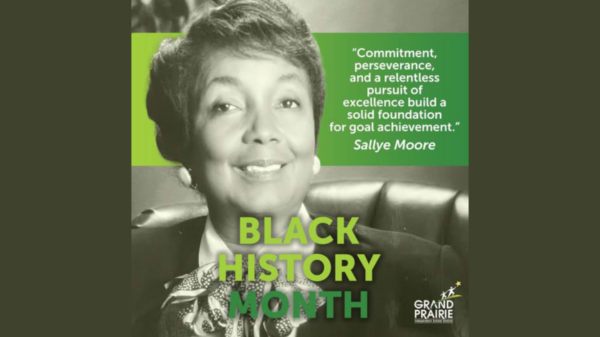
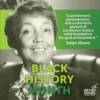
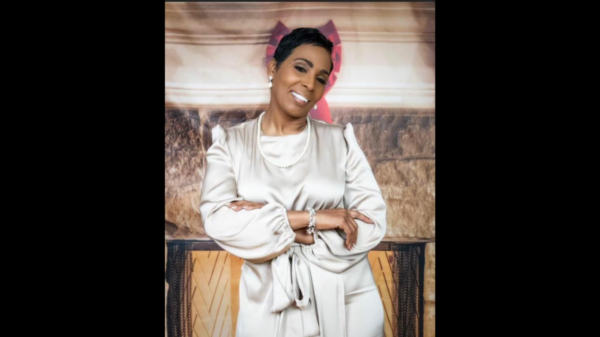

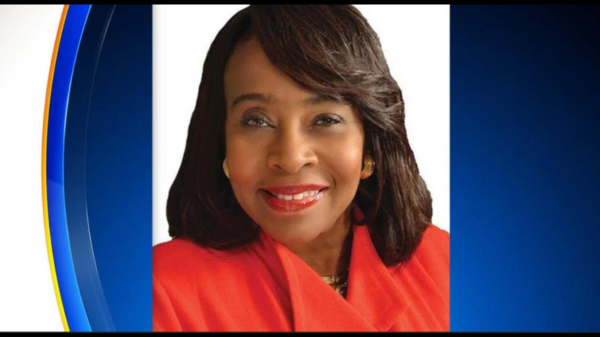

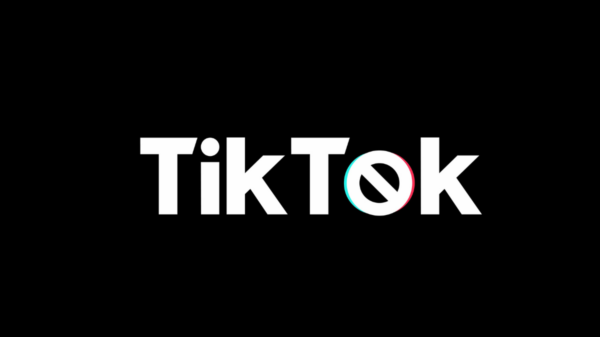
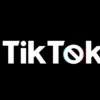
You must be logged in to post a comment Login